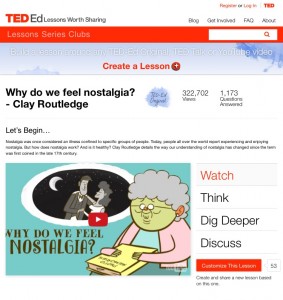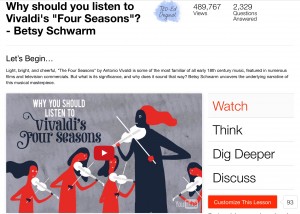
Before: I think that we feel nostalgia because things or objects that we have had past experiences with appear in our present lives, in which seeing or hearing these things triggers past memories, which could either make us feel happy, or sad.
After: After watching the TED-ED video, I discovered that I was correct in assuming that when faced with an object or thing that we have had past experiences with, we humans might feel nostalgia. At first, nostolgia was treated as a mental disease that could only bring negative emotions, but as time stretched on, it was discovered that nostalgia is a mental experience that could trigger not only negative emotions, but positive ones too. Nostalgia can increase self-esteem and charitable actions, along with many other psostive and uplifting emotions.
Why I’m Glad that I Took the Time to be CURIOUS: I am glad that I took the time to be curious, as the next time that I feel the presence of nostalgia, I will have a more complex understanding of it.
